To understand slavery in Alabama is to understand the larger machinery of the slavery industrial complex, a network of systemic, corporate, and governmental mechanisms that not only perpetuated slavery historically but continue to extract value from its descendants through incarceration, economic exploitation, healthcare disparities, and educational inequities. Alabama, despite its modern façade of progress, remains haunted by the brutal and ongoing consequences of its history of human bondage. From the early 1800s through the Civil War and well into the 21st century, slavery in Alabama has morphed through various forms—from chattel slavery to convict leasing, Jim Crow, redlining, and the prison-industrial complex—all of which reflect a deliberate and continuous exploitation of Black labor, bodies, and existence.
Slavery in Alabama did not begin in earnest until the early 19th century, shortly after the land was violently seized from Indigenous peoples, primarily the Muscogee (Creek) Nation. The forced displacement of Native American communities, sanctioned by the federal government and carried out through wars, treaties, and policies like the Indian Removal Act of 1830, cleared vast territories for white settlement and agricultural exploitation. Once the land was taken, settlers streamed into Alabama from older slave states like Georgia, South Carolina, and Virginia, bringing with them not only their families but also their human property—enslaved Africans.
These enslaved people were forced to clear forests, build homes and infrastructure, and most importantly, plant and pick cotton. Alabama quickly became the heart of the cotton kingdom, a region stretching across the Deep South where slavery and cotton reigned supreme. By 1860, nearly half of Alabama’s population was enslaved. The state’s wealth, political influence, and national standing were all derived from the backs of these enslaved individuals. Cotton was king in Alabama, and cotton demanded labor—backbreaking, unceasing, and utterly dehumanizing labor. The cotton economy did not merely rely on enslaved people; it devoured them.
The conditions were harsh and the expectations relentless. Enslaved individuals in Alabama were often worked from sunup to sundown, subjected to whipping, psychological terror, family separations, and sexual violence. The cotton gin, developed in the late 18th century, made short-staple cotton processing more efficient, and this in turn drove up the demand for enslaved labor. Alabama’s fertile Black Belt region, named for its dark, nutrient-rich soil, became a prime site for plantation agriculture, and thus for slavery itself. This expansion of slavery was not organic but organized and facilitated through domestic slave migration. Enslaved people were forcibly moved from the Upper South to Alabama in vast numbers through a system known as the Second Middle Passage, a massive internal slave trade that moved over one million people from places like Maryland and Virginia into the Deep South.
The slave migration into Alabama was a brutal and traumatic process. Families were torn apart, and individuals were marched in chains for hundreds of miles. Slave traders and dealers operated in cities like Montgomery, Mobile, and Selma, where markets for buying and selling Black human beings flourished. These marketplaces were integral parts of the local and national economy. Banks provided loans for the purchase of enslaved people. Insurance companies sold policies on their lives, treating them like livestock. Transport companies profited from their movement. And the entire apparatus was underwritten by a legal system that recognized enslaved people not as humans, but as chattel.
Corporate wealth in the region, even institutions still in operation today, can be traced back to profits made through slavery. Merchants who traded cotton and landowners who leased enslaved labor made fortunes that seeded banks, railroads, and industrial enterprises that lasted well beyond the end of the Civil War. Even the so-called modernization of Alabama was done with enslaved labor. The construction of roads, railways, and cities relied heavily on the forced toil of enslaved Africans. Birmingham would rise later as a center of industry, but its origins too can be tied to an economic system that took root in slavery. Enslaved people mined iron, built foundries, and constructed early infrastructure under brutal supervision.
Slavery in Alabama was not limited to fields but expanded into every area where wealth was being generated. The state’s laws were carefully constructed to ensure the complete subordination of Black people. Fugitive slave laws, slave patrols, and curfews all contributed to a climate of fear and control. Resistance was met with extreme violence. Enslaved people who attempted escape or rebellion were often executed, mutilated, or sold far away from their families as punishment. Yet despite this terror, enslaved people resisted in countless ways, through subtle acts of defiance, sabotage, and the preservation of culture. They maintained oral traditions, spiritual practices, and kinship networks that defied the logic of ownership and asserted their humanity in the face of relentless dehumanization.
When the Civil War began, Alabama was among the first states to secede from the Union, and it did so explicitly to protect slavery. The state’s economy, social hierarchy, and political power were all built on slavery, and the ruling class was unwilling to surrender that foundation. Alabama contributed more than its share of troops and resources to the Confederate cause, and it served as a crucial site for the production and shipment of goods for the Confederate army. Even as the war drew to a close and the Confederacy collapsed, Alabama’s white elite resisted emancipation with every tool at their disposal.
When slavery was officially abolished in 1865 through the Thirteenth Amendment, the state quickly moved to preserve the substance of the institution through other means. The post-slavery era in Alabama was marked by the rise of Black Codes and convict leasing, mechanisms designed to criminalize Black life and continue the extraction of labor from Black bodies. Black Codes were laws that restricted where Black people could live, work, or travel, and made unemployment or loitering criminal offenses. This legal framework ensured a constant flow of Black men into the criminal justice system. Once incarcerated, these men were leased out to private companies to work in mines, on farms, and in factories, under conditions often more brutal than those under slavery.
Alabama’s convict leasing system became one of the most notorious in the nation. Corporations such as the Tennessee Coal, Iron and Railroad Company, later absorbed by U.S. Steel, built immense wealth through the use of this system. Prisoners were worked to death, denied medical care, and subjected to inhumane conditions, all for the profit of private enterprise and the state. These practices were sanctioned and often managed by state and local governments, blending corporate greed with state violence. Families of the incarcerated had no legal recourse, and the line between slavery and freedom was blurred beyond recognition for those caught in this system.
This system persisted well into the 20th century. Even after convict leasing was formally ended in the 1920s due to public outcry, chain gangs and prison labor continued. The logic of slavery—maximum profit with minimum rights—was never truly dismantled. It simply evolved. And the companies that built their fortunes on this coerced labor continued to operate, some expanding nationally and internationally. The state of Alabama itself became deeply entangled in this system, relying on prison labor for public works and budget support. Today, Alabama’s prisons remain overcrowded, violent, and disproportionately filled with Black men, many of whom are forced to work for little or no compensation.
The Thirteenth Amendment, while abolishing slavery, included a clause permitting involuntary servitude as punishment for a crime. Alabama has wielded this exception clause to preserve a modern form of slavery within its prison walls. Meanwhile, the corporate world has not relinquished its role in racial exploitation. Banks, insurance companies, railroads, and manufacturers that once profited from slavery now continue to benefit from the wealth that slavery generated and from ongoing structural inequality.
The modern slavery industrial complex is not confined to prisons. It includes wage theft, underemployment, discriminatory lending, healthcare disparities, and educational exclusion. Black workers in Alabama continue to earn less, own less, and die younger than their white counterparts. This is not the result of individual failure but of a historical trajectory that began with slavery and has been reinforced by every institution that followed. The economic marginalization of Black communities in Alabama is deliberate and systemic. Redlining prevented Black families from buying homes or securing loans in white neighborhoods. Urban renewal programs destroyed Black neighborhoods under the guise of development. Public schools in Black neighborhoods have been underfunded for generations, producing unequal educational outcomes and limiting opportunities for social mobility.
Corporations that refuse to invest in Black communities, that deny jobs and promotions to Black workers, or that exploit Black labor while denying them leadership roles are continuing the legacy of slavery in subtler but no less harmful ways. Healthcare in Alabama also reveals the lasting impact of slavery. Black residents face higher rates of maternal mortality, chronic illness, and limited access to medical care. These disparities are not coincidental. They stem from a medical system that, from its inception, experimented on Black bodies without consent, neglected their pain, and treated them as expendable.
The exploitation of enslaved women for gynecological research in the 19th century occurred in the South and laid the foundation for many modern medical practices, yet the victims of this exploitation have never been honored or compensated. Today, pharmaceutical companies and healthcare providers that profit from the bodies of Black Alabamians often fail to invest meaningfully in their care or well-being. Corporations operating in Alabama today must confront their historical connections to slavery and its aftermath. Whether through direct ties to slavery-era companies, complicity in the prison-industrial complex, or exploitation of racialized labor, many continue to benefit from structures created to suppress and exploit Black people.
Some companies have acknowledged this history, but few have taken meaningful steps to address it. Reparations, community investment, wage parity, and structural reforms are necessary steps to dismantle this modern slavery industrial complex. The story of slavery in Alabama is not simply about the past; it is about the present and the systems that continue to shape the lives of millions. It is about how wealth was extracted from Black bodies, transferred to white institutions, and used to build a state whose economy, politics, and culture are still defined by racial inequality.
It is about the need to understand that slavery was not an aberration but a foundational component of American capitalism, particularly in Alabama, where cotton and iron built fortunes that endure today. To reckon with this legacy requires more than acknowledgment. It requires redistribution. It requires legal, educational, and economic transformation. It requires a commitment to undoing the harm that was done, not just in memory but in material terms. Alabama cannot move forward until it confronts the full depth of its complicity in slavery and the systems it left behind.
The enslaved people who built this state with their hands, sweat, and lives deserve nothing less than full recognition and reparative justice. The wealth they generated must be accounted for, and the institutions that profited must become part of the solution. Only then can Alabama begin to shed the legacy of slavery and move toward a future that honors the humanity of all its people.
While much of Alabama’s historical focus has centered on the economic dimensions of slavery and post-slavery labor systems, the state’s legal, religious, and cultural institutions were equally entangled in the maintenance of white supremacy and Black subjugation. Alabama’s legal code was among the most aggressive in the South when it came to regulating the behavior of enslaved people and suppressing resistance. Laws prohibited enslaved persons from learning to read or write, owning property, testifying against white people, or gathering without supervision. These laws were designed not only to suppress rebellion but to erase any legal personhood of enslaved individuals. The law refused to recognize enslaved people as capable of legitimate thought, ownership, or agency.
This legal framework did not dissolve with the abolition of slavery; it merely changed form. During Reconstruction, the Black Codes—precursors to Jim Crow laws—ensured that Black Alabamians remained at the bottom of the legal hierarchy. Courts were heavily biased against Black defendants, and juries were either all-white or composed of property-owning men who benefited directly or indirectly from racial hierarchy. For generations, the court system in Alabama served as a pipeline from freedom to forced labor, from accusation to incarceration. This legacy has persisted, contributing to the modern-day crisis of mass incarceration and disenfranchisement.
Religious institutions in Alabama also played a complex role in the maintenance of slavery. Many white churches not only condoned but actively promoted slavery, citing biblical passages to justify the ownership of human beings. Southern Baptist congregations and other denominations fragmented from their Northern counterparts over the issue of slavery, asserting that it was both a divinely sanctioned and economically essential institution. Sermons preached from pulpits across the state often reinforced obedience among enslaved congregants and framed their suffering as redemptive or inevitable. However, within the enslaved community, Christianity was often reinterpreted as a theology of liberation.
Enslaved Alabamians developed their own spiritual traditions, fusing African cosmologies with Christian beliefs to create a theology rooted in hope, resistance, and the belief in ultimate justice. These spiritual practices not only sustained communities through unspeakable brutality but also laid the foundation for Alabama’s long tradition of religiously grounded resistance. The Black church would eventually become the epicenter of social, political, and educational life for newly freed African Americans and their descendants.
Education, a privilege denied to enslaved people, became one of the most urgent priorities for Black Alabamians after emancipation. The Freedmen’s Bureau and missionary organizations established schools across the state, often in the face of violent white opposition. These schools, built from scratch and staffed by Black and Northern white teachers, became incubators for the development of a Black intelligentsia that would go on to challenge Alabama’s racial hierarchy.
Booker T. Washington, one of the most famous educators and intellectuals in American history, established Tuskegee Institute in 1881 in Alabama. Though Washington’s philosophy of industrial education was sometimes criticized for its accommodationism, Tuskegee produced generations of teachers, doctors, farmers, and thinkers who uplifted their communities and resisted the narrative of Black inferiority.
The very act of educating Black children and adults in post-slavery Alabama was radical. White supremacists recognized this and attacked Black schools, burned schoolhouses, and intimidated teachers in an effort to destroy the progress of Black education. Yet the resilience of Black Alabamians to establish and protect institutions of learning remains one of the most powerful chapters in the state’s history. Many historically Black colleges and universities (HBCUs) in Alabama, including Tuskegee and Alabama State University, were founded during or shortly after Reconstruction and continue to serve as pillars of Black advancement.
Cultural life in Alabama has always reflected the tension between suppression and expression, between dominance and defiance. Despite efforts to erase Black history and culture, enslaved and later free Black Alabamians created vibrant musical, culinary, literary, and spiritual traditions that both preserved African roots and adapted to the American context. From the mournful power of the spirituals sung in the fields to the jubilant beats of blues and jazz birthed in Black communities, the cultural contributions of Black Alabamians became central to the American canon even as their creators were marginalized, segregated, or criminalized.
In literature, Black voices from Alabama helped narrate the horrors of slavery and the struggle for freedom. Slave narratives, such as those collected by the WPA during the 1930s, offer firsthand accounts of life in bondage in Alabama. These narratives describe the daily indignities, acts of resistance, and complex family dynamics that defined enslaved life. Many of these stories include references to beatings, separations, and forced breeding, but they also include humor, memory, and the strength of community. They are invaluable records of the human cost of Alabama’s wealth.
The labor of enslaved people laid the physical foundation for Alabama’s infrastructure, but it also shaped its political and social systems. For most of its pre-Civil War existence, Alabama’s political leaders were wealthy slaveholders who controlled the legislature, the judiciary, and most positions of influence. The political culture of the state was dominated by a commitment to maintaining white supremacy at any cost. Even after emancipation, this commitment remained unchanged. Voter suppression tactics such as poll taxes, literacy tests, and grandfather clauses ensured that Black political power was stifled for nearly a century.
Yet despite overwhelming obstacles, Alabama produced some of the most courageous figures in the fight for civil rights and racial justice. Formerly enslaved individuals and their descendants became abolitionists, educators, union organizers, and eventually civil rights leaders. Frederick Douglass, though not born in Alabama, frequently corresponded with activists in the state and monitored the conditions of Black life there. Alabama also birthed grassroots abolitionist resistance that is less documented but equally significant—underground schools, runaway networks, and acts of sabotage that challenged the authority of white slaveholders from within.
As the 20th century dawned, Alabama’s Black population faced new challenges. The Great Migration saw thousands of Black families leave the state for northern cities in search of work, freedom, and safety. However, many remained behind, and their struggle became a foundation of the modern civil rights movement. Alabama became the epicenter of that movement—home to Rosa Parks, the Montgomery Bus Boycott, Martin Luther King Jr.’s early ministry, the Selma voting rights marches, and the Children’s Crusade in Birmingham. These events did not occur in a vacuum. They were the culmination of centuries of resistance to racial oppression that began with slavery.
Civil rights activism in Alabama directly challenged the economic, political, and legal systems that had evolved from the slave economy. Protesters targeted discriminatory hiring practices, unequal schools, segregated hospitals, and brutal policing—systems that were modern expressions of the same white supremacist logic that once sanctioned slavery. In response, the state of Alabama, often with federal complicity, met these challenges with surveillance, violence, and incarceration. The Alabama State Sovereignty Commission, for example, was established to spy on civil rights activists and preserve segregation under the guise of law and order.
Meanwhile, corporate America often stood silently or actively collaborated with white supremacist regimes. Companies refused to hire Black workers or relegated them to the most dangerous and underpaid jobs. Unions were often segregated, and Black workers were excluded from benefits and pensions. Economic boycotts organized by civil rights groups—such as those targeting discriminatory department stores or businesses in Birmingham—exposed the deep entanglement of commerce and racism in Alabama.
By the late 20th century, Alabama had become one of the most incarcerated states in the country, with one of the highest percentages of Black men behind bars. This is not a coincidence but a direct consequence of the systems of control created during slavery and modified through convict leasing, Jim Crow laws, and the War on Drugs. Today, Alabama continues to imprison Black citizens at disproportionate rates, often for non-violent offenses, and requires them to perform unpaid or low-paid labor inside prisons that generate profit for private corporations and the state itself.
This modern carceral system reflects a continuity with the past rather than a rupture. It is a contemporary extension of the economic model that underpinned slavery: extract labor, deny freedom, and punish resistance. The corporations that benefit from prison labor today are often the same ones—or descendants of the ones—that benefited from chattel slavery or convict leasing. They operate under a new legal framework but follow the same moral logic: profit over people, efficiency over humanity.
Alabama’s educational system also continues to reflect the legacy of slavery. Schools in predominantly Black neighborhoods remain underfunded, overcrowded, and under-resourced. Textbooks often omit or whitewash the history of slavery, and Black students are disproportionately disciplined or pushed into the criminal justice system through policies such as zero-tolerance discipline and school policing. The school-to-prison pipeline is alive and well in Alabama and serves to reproduce the racial and economic hierarchies born of slavery.
Efforts to revise school curricula to include the full history of slavery are met with political backlash, book bans, and accusations of “indoctrination.” This resistance is not accidental—it is a desperate attempt to control the narrative and prevent accountability. Yet a growing number of educators, students, and activists in Alabama are fighting to ensure that future generations understand the true history of their state and the sacrifices made by those who came before them.
In truth, no single essay can contain the full measure of Alabama’s connection to slavery and its afterlife. The soil itself is stained with blood, from the cotton fields of the Black Belt to the gravel of prison labor camps. The architecture of state buildings, universities, and courthouses rests upon foundations built by people who were never paid and never thanked. The wealth generated through centuries of racial exploitation continues to circulate in the stock portfolios, bank accounts, and institutional endowments of corporations and families whose fortunes were born of bondage.
To truly reckon with Alabama’s long and brutal history of slavery and its persistent aftershocks, the state—and the nation—must move beyond mere acknowledgment toward a sustained, strategic commitment to reparative justice. Historical memory without structural transformation is insufficient. The echoes of slavery do not simply reside in textbooks or museums—they vibrate in the present through inequities in wealth, education, health, incarceration, and land ownership. They scream through the underdeveloped infrastructure in Black communities, the divestment from Black schools, the toxic environmental conditions imposed on Black neighborhoods, and the continued erasure of Black contributions to Alabama’s cultural and economic development.
The first step toward meaningful healing is the recognition that reparations are not merely a matter of financial compensation. They are about correcting the material and systemic legacies of theft, brutality, and exclusion. Reparations must address both the stolen labor of millions and the compounding harms created through discriminatory policy after slavery formally ended. For Alabama, this means identifying the institutions, corporations, municipalities, and families who profited directly from slavery and convict leasing—and calling upon them to invest, publicly and privately, in the communities that were decimated by these systems.
Reparations must also come from the state itself. The government of Alabama cannot stand apart from the injustices it once legislated, enforced, and protected. It must invest in Black education—not just through equal funding, but through targeted investment in historically neglected Black schools and universities. Curricula must be rewritten to center Black history, with Alabama’s role in slavery and racial apartheid told truthfully and without euphemism. Public monuments to white supremacy, including statues of enslavers and Confederate leaders, must be removed and replaced with tributes to the enslaved, the resistant, and the visionary.
True reparations include land restoration and economic revitalization, especially in the Black Belt region, which was once the economic heart of slavery and today remains among the poorest areas in the United States. This region was built by enslaved hands and still bears the scars of dispossession. Land grants, zero-interest loans for Black farmers, community land trusts, and cooperative economics are tangible ways to begin restoring what was violently taken.
Healthcare reform must be a priority. The maternal mortality crisis facing Black women in Alabama is not a fluke—it is the result of a centuries-old pattern of neglect, experimentation, and dehumanization. Reparative health justice includes funding Black clinics, ensuring universal access, and retraining medical personnel in anti-racist care. It includes holding pharmaceutical companies and hospitals accountable for decades of abuse and exploitation of Black bodies, while ensuring that Black Alabamians shape and lead new systems of care.
Housing justice is also integral. The legacies of redlining, racial covenants, predatory lending, and urban renewal have robbed Black families of intergenerational wealth and access to stable housing. Reparations here mean down-payment assistance, access to mortgage capital, anti-gentrification protections, and robust investment in Black neighborhoods—not to displace, but to uplift. It means recognizing that wealth gaps in Alabama were created not by personal choices but by legal theft and structural violence that persist to this day.
Criminal justice reform must be addressed with urgency. Alabama must end forced prison labor, dismantle its private prison contracts, and remove the financial incentives that encourage mass incarceration. The state must expunge the criminal records of those convicted under racially targeted drug laws, decriminalize survival-based offenses, and create restorative justice alternatives to incarceration. The prison system in Alabama, built in the image of the plantation, must be demolished and replaced with systems of accountability and healing that prioritize humanity over punishment.
But perhaps most crucially, Alabama must begin to institutionalize truth-telling. A statewide truth and reconciliation commission, modeled after those used in post-apartheid South Africa or post-genocide Rwanda, could serve as a powerful tool for healing. Such a commission would gather testimonies from descendants of enslaved people, survivors of racial violence, and experts in history, law, and justice. It would produce a public record of Alabama’s history of slavery and racial violence, including lynchings, segregation, and civil rights-era terror. And it would make formal recommendations for reparations, education, and structural reform.
Healing, however, is not a top-down process. It also begins in local communities—through oral history projects, neighborhood restoration initiatives, youth mentorship, and cultural renewal. Alabama’s Black churches, community organizations, artists, and educators have always been the backbone of resistance and resilience. They must be empowered not only to survive, but to lead. This empowerment includes not just funding, but a shift in narrative—recognizing that Black communities are not passive recipients of charity, but the rightful inheritors of resources built by their ancestors.
True healing for Alabama requires a radical transformation of values—a statewide commitment to justice over convenience, to truth over denial, to equity over charity. It requires white Alabamians to confront their inherited privilege and actively participate in dismantling systems from which they have benefited. It requires courage from politicians, honesty from educators, humility from institutions, and perseverance from everyone. Healing is not linear. It is messy, painful, and slow. But it is necessary.
Alabama has long been a symbol of both the cruelty of American racism and the power of Black resistance. From the cotton fields to the iron mines, from Montgomery’s bus boycott to Selma’s bridge, Alabama’s soil holds the bones of brutality and the seeds of liberation. It is time to water those seeds with justice.
To the corporations that still operate on stolen wealth, the universities built on slavery’s spoils, and the public institutions complicit in generational exclusion—this is your moment. Offer more than statements. Offer land, resources, leadership roles, endowments, and long-term investment in Black communities. Replace symbolic apologies with material restitution. Begin the long overdue work of repair.
To the state of Alabama, there must be no more hiding behind sanitized history or economic excuses. The blueprint of slavery runs through your archives, your courthouses, your budgets, and your infrastructure. You must confront it fully, apologize publicly, legislate responsibly, and repair diligently.
To the people of Alabama—especially its Black citizens—the truth is this: You are owed. Not in symbolic gestures but in real, transformative change. Your ancestors built this land. Their bones fertilized its fields. Their blood powered its industries. Their labor lined the pockets of white families, corporations, and governments. Their dreams were deferred, but not destroyed.
The path forward is neither easy nor short. But it is possible. The legacy of slavery in Alabama can no longer be denied, minimized, or whitewashed. It must be faced with open eyes and determined hearts. For only through justice can there be peace. And only through reparations can there be healing.
The future of Alabama—and of the nation—depends on what it chooses to do with this truth. Will it continue to bury the past beneath concrete and bureaucracy? Or will it finally reckon, repair, and rise?
The choice is not abstract. It is moral. It is urgent. And it is now.





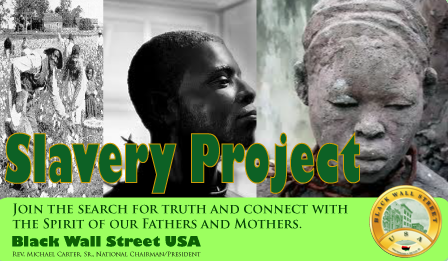
Alabama
Alaska
Arizona
Arkansas
California
Colorado
Connecticut
Delaware
Florida
Georgia
Hawaii
Idaho
Illinois
Indiana
Iowa
Kansas
Kentucky
Louisiana
Maine
Maryland
Massachusetts
Michigan
Minnesota
Mississippi
Missouri
Montana
Nebraska
Nevada
New Hampshire
New Jersey
New Mexico
New York
North Carolina
North Dakota
Ohio
Oklahoma
Oregon
Pennsylvania
Rhode Island
South Carolina
South Dakota
Tennessee
Texas
Utah
Vermont
Virginia
Washington
West Virginia
Wisconsin
Wyoming
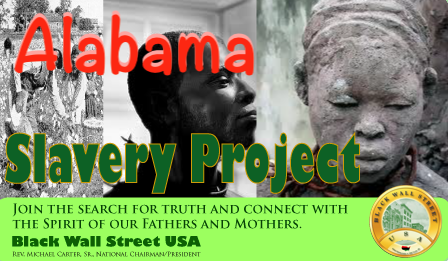
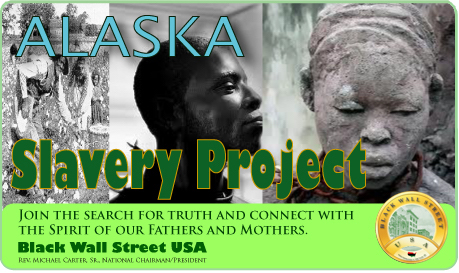



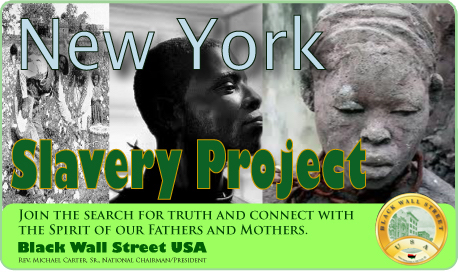

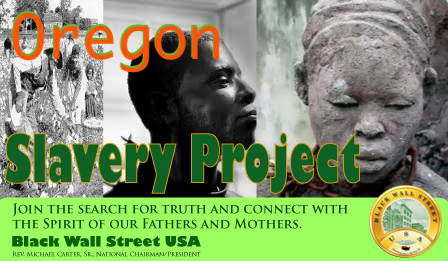
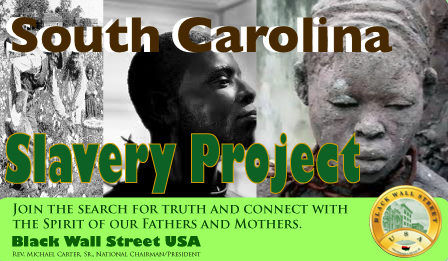
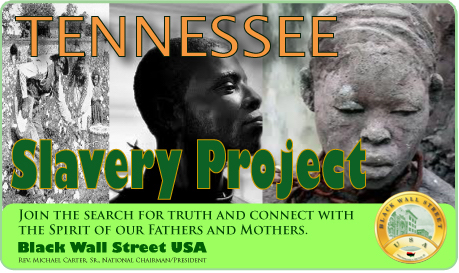
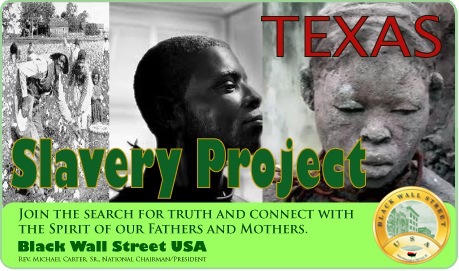



BlackWallStreet.org

Slave Records By State
See: Slave Records By State
Freedmen's Bureau Records
See: Freedmen's Bureau Online
American Slavery Records
See: American Slavery Records
American Slavery: Slave Narratives
See: Slave Narratives
American Slavery: Slave Owners
See: Slave Owners
American Slavery: Slave Records By County
See: Slave Records By County
American Slavery: Underground Railroad
See: American Slavery: Underground Railroad


